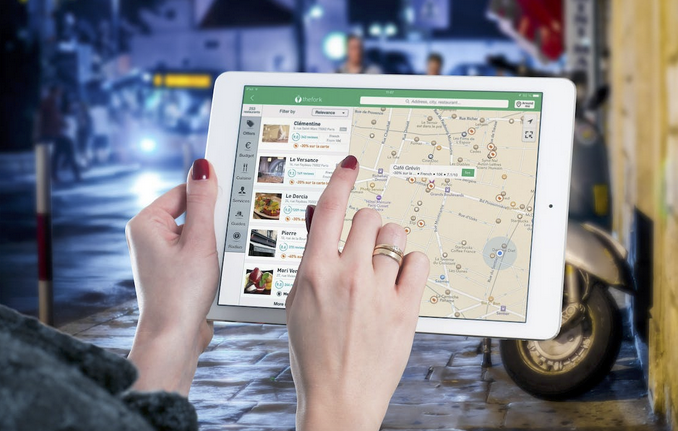Imagine you’re becoming one of your city’s most popular cake makers with several five-star ratings. Now, one of the most popular Coffee Shops is seeking a partnership with you to provide the cakes for them. The thing is, you’re expected to deliver the cakes every day, in different cities. You hire your own delivery crew or avail of delivery services to distribute your cakes.
The biggest challenges that delivery staff face are the inability to handle larger numbers of clients quickly and a lack of visibility. With other transportation issues, such as cargo ship delays and inefficient digital maps, there is much to consider in delivery route planning. Aside from traditional methods of rate negotiation and switching carriers, businesses are exploring more modern solutions to solving fulfillment roadblocks.
Shipping routes affect overall efficiency and production if you distribute goods. Planning a logistics route well can make a huge difference for your company. One of the key elements in guaranteeing seamless, secure, and punctual delivery is route planning and optimization.
What is Delivery Route Planning?
Delivery route planning is choosing optimal delivery routes to be as fast and cost-efficient as possible. It involves analyzing several delivery touchpoints to determine the best path for delivery staff—traffic conditions, priority deliveries, vehicles used, and even driver performance contribute to efficient route planning.
Satisfying customer expectations and accurately determining delivery costs might be challenging without careful route planning.
Delivery route planning has traditionally been done by hand with maps and, more recently, digital maps such as Google Maps. This traditional and free method does not provide real-time visibility into your delivery fleet, making it challenging to keep track of your day-to-day operations. In fact, the Italian town of Baunei banned Google Maps for causing a lot of accidents and expenses to their town due to the platform’s inefficiency.
Changing weather, traffic, consumer preferences, and resource availability make calculating delivery routes difficult. These methods also lack the aggregate data necessary to make educated judgments about optimization.

Utilizing Google Maps or other navigation apps for small delivery route planning is fine. But when your company expands, finding the fastest way between each scheduled stop and manually entering routes becomes more challenging.
In the third quarter of 2022, Grab Holdings Limited stopped depending on Google Maps and launched its own location-mapping technology called GrabMaps. GrabMaps made it easier for their drivers to navigate areas that aren’t visible on GoogleMaps. As a customer-centric approach, it minimizes discussions or problems with delivery riders. It also predicted the arrival of orders.
5 Benefits of Delivery Route Planning
Delivery route planning is essential if your logistic requirements are complicated or highly important. This strategy has several advantages, including better uses for getting your items to their destinations on time. It guarantees prompt delivery while also minimizing driver stress. Doing so lowers the chance of accidents and better uses your resources. Faster deliveries increase customer satisfaction, which leads to a bigger bottom line.
1. Increased Route Efficiency
One of the key advantages of dynamic route design is increased route efficiency. You might be able to deliver the items on time using a manual or traditional route planning method, but what if the customer reschedules or cancels the delivery? Finding an effective route for more deliveries might take more time and work. However, dynamic route planning systems can create new routes quickly. Drivers may guarantee more deliveries in a day by using a practical course.
2. Reduced Transportation Costs
Delivery route planning can save fuel by preventing the driver from making pointless trips to locations where the client is not present. Drivers can know the canceled orders in advance, eliminating wasted trip costs. Additionally, drivers will have new routes to deliver additional orders.
3. Reduced Risk of Accidents
When faced with ambiguous routes, drivers may experience tension, anxiety, or exhaustion. These can be caused by stress-inducing factors such as traffic jams, construction, or other roadblocks, which can be avoided by adequately planning routes.
Accidents are more likely to occur when a motorist is in distress. It can potentially destroy resources and pose a serious public safety concern. It can even damage property and cause injuries to your drivers and other motorists. Accidents could increase costs and even cause legal issues. With well-defined routes, there is less chance of confusion or driver tiredness, which lowers the risk of an accident.
4. Enhanced Customer Experience
Route planning considers your clients’ needs so you can provide better service. It is possible to postpone the order cutoff and define more exact delivery time frames.
You risk losing clients or partners if ineffective routes cause delivery delays. The most efficient routes will result in quicker delivery, increasing customer satisfaction. Giving customers fast deliveries will give you a competitive edge in your industry, draw in new customers, and strengthen existing ones. Being able to stick to deadlines can also improve the reputation of your business.

5. Improved Productivity
Wisely planning your route will increase your company’s output as a whole. You can reduce backtracking on the road, maximize driver shifts, and ensure deliveries use the least time and materials possible. You may devote more time and resources to other projects with increased delivery productivity, aiding your company’s growth and development.
Significantly reduce your fleet expenditures by increasing the occupancy rate. You save money on maintenance expenses, and you increase the lifespan of your fleet since drivers drive for fewer kilometers.
Implementing Delivery Route Planning
Implementing new strategies and plans for your business utilizing delivery route planning can get challenging. Doing so manually could be tricky as drivers may take too much time deciding the most efficient route based on data.
Here are some route optimization strategies to consider:
Route Optimization Software
You can invest in delivery route planning software. This software is created specifically to plan delivery routes for shipping companies or delivery vehicles’ fleets. These applications typically include scheduling features, enabling agents to be strategically given tasks for greater efficiency.
Delivery route planning software helps overcome the main issues with manual route planning by providing real-time data and analytics. For instance, the program will automatically maximize daily deliveries by considering the travel time between various delivery sites. It recommends the best delivery path, allowing for speed and less gasoline. Some programs for route planning software also include capabilities that provide dynamic rerouting based on important variables.
Third-Party Logistics (3PL)
According to a study by Grab, 7 out of 10 Filipinos say that food or item delivery is now a vital part of their permanent lives, especially in huge cities where traffic is commonplace and everyone is busy. People would need delivery riders to do delivery or distribution tasks for them.
Given your other commitments and objectives, you might not always have the time or resources to plan effective routes. Handing your delivery logistics to a qualified service provider could be advantageous. A 3PL supplier can handle your recurrent routed deliveries. Partnering with these companies offers tailored delivery services to meet your business’s unique requirements. You may concentrate on other things while they handle challenging route planning specifics.
Effective route planning to optimize delivery schedules is a great method to enhance daily operations. Carefully arranging your logistical routes can grow your company while spending less money. You may also employ internal tactics to accomplish these objectives, such as recruiting a dispatching staff and investing in route optimization software.
Aratum offers logistics software solutions to take your eCommerce business to the next level. With cost-efficient and trackable shipping services, you can easily control your fulfillment operations on an easy-to-use digital platform. Find the best routes for your deliveries when you sign-up today.
The featured photo of this article was sourced from Pexels.



